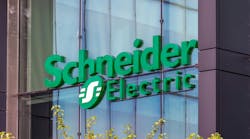Latest from Industry
Royal Philips, Eindhoven, Netherlands, announced last week at a London meeting with investors and analysts that it would separate its HealthTech and Lighting Solutions businesses into two separate companies and concentrate Royal Philips itself on consumer healthcare products and services.
The Philips Lighting Solutions business has annual sales of €7 billion (approximately $9 billion) excluding the company’s Lumileds (LED components) and Automotive lighting businesses, which were recently spun off into another separate lighting business.
Philips’ divestiture of lighting follows a trend in the market that’s being driven by the shift to solid-state lighting technologies and the growing competition in the LED lighting market. Siemens last year spun off its Osram lighting business as a stand-alone company. GE recently sold Electrolux its appliances business, but held onto GE Lighting, which was part of the appliance organization. Speculation that GE will ultimately get out of lighting continues to simmer. The moves share a common theme in the accelerating decline of sales in conventional lighting technologies and the rise of new entrants selling LED lighting without the baggage of legacy technologies.
Lighting was one of the foundational technologies for Philips when it was founded 123 years ago, a legacy not lost on Frans van Houten, CEO of Royal Philips, who said in a press release, “I do appreciate the magnitude of the decision we are taking, but the time is right to take the next strategic step for Philips, as we continue on our transformation. To become the global leader in HealthTech and shape the future of the industry, we will combine our vibrant Healthcare and Consumer Lifestyle businesses into one company. At the same time, giving independence to our Lighting Solutions business will better enable it to expand its global leadership position and venture into adjacent market opportunities. Both companies will be able to make the appropriate investments to boost growth and drive profitability, ultimately generating significantly more value for our customers, employees and shareholders.”
Philips’ Lighting Solutions business, already one of the global leaders in lighting and serving a growing market estimated to exceed €60 billion (approximately $77.1 billion), will be better positioned to capitalize on the fundamental changes taking place in the lighting industry, in which the value is shifting from individual products to systems and services, the Philips release said. As a stand-alone company, the Lighting Solutions business will benefit from improved speed and agility in its operations to deliver innovation and capital market access to boost growth in connected LED lighting systems and services, more than offsetting the decline of conventional lighting, Philips said.
The creation of the Lighting Solutions company follows the recently announced plan to combine Philips’ Lumileds (LED components) and Automotive lighting businesses into a stand-alone lighting components company. Philips viewed those business lines as closely linked by joint research and development on the upstream side of the lighting business, while the lighting solutions business concentrates on providing lighting and services to the trade and consumer markets downstream.
Meanwhile, Philips said lighting’s contribution to company results will mean improvement in earnings in the second half of 2014, with cost savings programs and a less negative impact from currency headwinds compared to the first half of 2014 bolstered by gradual improvement in performance in Professional Lighting Solutions North America and Consumer Luminaires Europe. Those improvements will be partially offset by additional costs related to the company’s Cleveland production facility, “certain legal proceedings” and softness in multiple markets.












